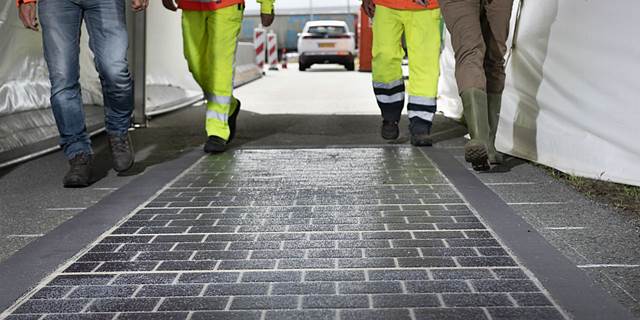Ever since the Netherlands started to see strong development of MW-sized ground-mounted solar plants, thanks to the SDE+ program for large-scale renewables, a discussion on the country’s limited resources, in terms of available land, has started on both local and national media.
The old refrain that solar is a big danger for agriculture, and that it is already eroding vast portions of agricultural surfaces across the country was tackled by Dutch solar energy association, Holland Solar in late May. By providing figures based on scientific research conducted by the Energy Research Center of the Netherlands, the association showed that, even if the Netherlands reached its ambitious target of deploying 16 GW of PV by 2050, only around 0.50% of its agricultural surfaces would be occupied.
Despite these reassuring numbers, concerns about availability of land are still strong in Europe’s mostly densely populated country, as a recent announcement from Dutch water management agency, Rijkswaterstaat, part of the Dutch Ministry of Infrastructure and the Environment, has shown. In response, the agency has said it will test the feasibility of solar roads, as an alternative to the construction of big solar parks. “Finding space for the generation of solar energy requires creativity,” the agency said.
Rijkswaterstaat will make initial tests on secondary roads (N-wegen), as large highways are not considered suitable for these kind of projects, due to the high noise caused by the vehicles’ speed, and because drainage of rainwater on multi-lane roads is unfavorable for PV modules, explained the agency.
A partnership for the first tests has been forged with Dutch infrastructure construction services, BAM Infra and French solar road specialist, Wattway, a subsidiary of Bouygues S.A., which is building the so-called “Wattway” paving in northwestern France – a project that is being backed by the French government.
“If the pilot projects prove to be successful, then similar solar roads may be rolled out on a large scale in 5 to 10 years,” the agency said.
Rijkswaterstaat started to seek alternative surfaces for solar deployment in March 2017, when it announced a plan to make water surfaces and other land under its control available for the installation of PV and other renewable energy power plants. Later in October, it then unveiled a plan to install noise barriers featuring integrated bifacial solar modules.
Solar roads in the Netherlands are not an unfamiliar concept. A bike path near Amsterdam was equipped with solar panels in 2016. The feasibility and economic viability of solar roads, however, still remains controversial. In China, a 1 km stretch of highway near Jinan, the capital of the northeastern Shandong province, is currently paved with thin film modules. In January, the highway operator, Qilu Transportation Development Group revealed that some of the PV modules were stolen and damaged by thieves.
This content is protected by copyright and may not be reused. If you want to cooperate with us and would like to reuse some of our content, please contact: editors@pv-magazine.com.




Have they ever heard of rooftop solar? I just picked a city that I could remember the name of and was quickly able to identify lots of commercial/industrial rooftop space in two areas in Eindhoven! Haven’t they heard of floating solar? The Dutch water management agency should have some idea where there might be some inland bodies of water where they could implement floating solar